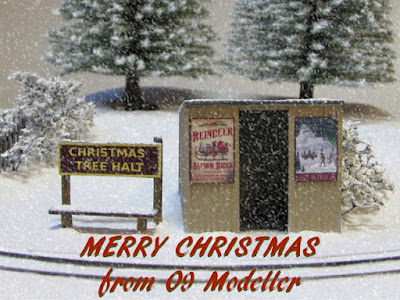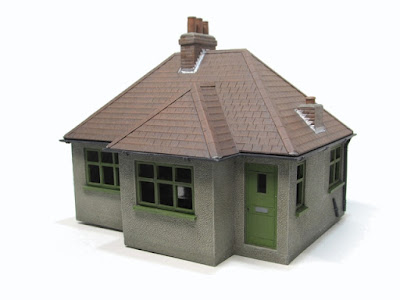I received this new Alan Keef K30 print from A1 Models a week or so as John Flower felt that it might be suitable for O9 use. With a few provisos it isn't bad for a maximum-width O9 loco, 28+ mm wide and 43 mm tall when sat on a Kato 11-10. In fact I think my green Knightwing bash might have been a similar size a few years ago.
It is difficult to see in the pictures in raw form that it is print with a rough finish (it is incredibly difficult to photograph in this form too!)
I thought I would show the stages of finishing the print to a ready-to-paint state. Firstly the raw print was bathed in white spirit to degrease, then washed, dried, and the surface sanded with 400 grit. Then washed and dried again.
(Note: All sanding used home made sanding sticks made using wet and dry stuck to lolly sticks/coffee stirrers and was carried out wet.)
Red plastic primer was sprayed onto the model - this tends to highlight the surface and the print looks really rough and gritty.
More sanding followed, this time 800 grit sticks, then washed and dried.
A coat of yellow filler primer were applied, then another sand with 800 grit, revealing that a second coat would be beneficial.
After the second yellow coat I sanded with 1200 grit to the state seen here. Washing and drying occurred again after each sanding session (of course!).
Finally, grey primer has been applied to my satisfaction, giving a smooth finish with only a few minor imperfections. I have managed to achieve this with no loss of detail on the print, luckily it is mostly flat surfaces and angles, with no fine detail.
In all I think about 3+ hours of work went into finishing this 3D print to this state, broken up over several evenings and waiting for paint to thoroughly dry before sanding. I ask myself if I could have built it in less time from scratch, and no, I couldn't.... at this stage I think that it may stay in grey primer, it isn't really the locomotive I need at the moment, but at least it is making me think about what is...
Colin



















































